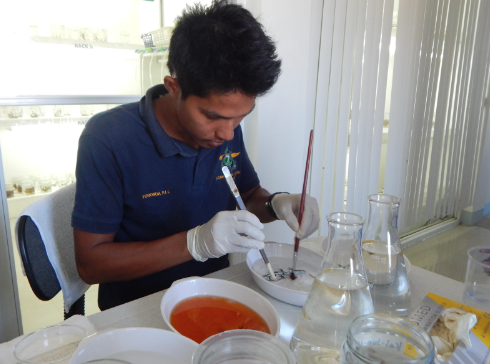Taras V Pleskun interviews Philip John Foronda of the Philippines Bureau of Fisheries and Aquatic Resources, and finds out why seaweed aquaculture is such an important industry.
Please Introduce yourself and how you first got into the aquaculture industry.
Hi! My name is Philip John Foronda. I am 28 yrs old from Brgy Cabaruan, Santo Tomas La Union Philippines. I have been a registered Fisheries Technologist since 2016. I am currently working at the Bureau of Fire Protection as a Fireman. I worked in aquaculture from 2016 to 2019. I was employed at Grobest Feeds Philippines Inc., a mass producer of high-quality aquafeeds. I spent seven months with the company before leaving to invest in my own fish farm.
Using my fish ponds, I cultivated rabbitfish, milkfish, and grouper but was unable to make an effective profit. That is why I applied to the Bureau of Fisheries and Aquatic Resources (BFAR). In March 2016, I was assigned to the BFAR Alaminos Aquaculture Laboratory as a technician in the seaweed laboratory. This laboratory focuses on preserving, maintaining, and developing production techniques for high-value seaweed species including Kappaphycus, Eucheuma, Gracilaria, and Caulerpa.
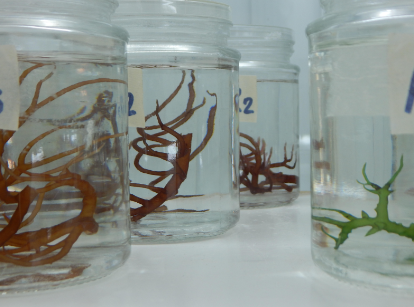
Since I was a child, I’ve been involved with my father’s fish farming efforts. We have grown milkfish, mud crabs, snappers, shrimps, prawns, oysters, jacks, rabbit fishes, scats, cichlids, and others. I have grown marine life since I was small and it remains a lifelong passion.
There are few seaweed farms in the United States. Why is seaweed aquaculture such an important industry in the Philippines?
The coastal region of the Philippines was gifted with many wonderful species of seaweed. Much like various fish, shells, echinoderms, and arthropods, macroalgae were primary historic food resources for Filipino people.
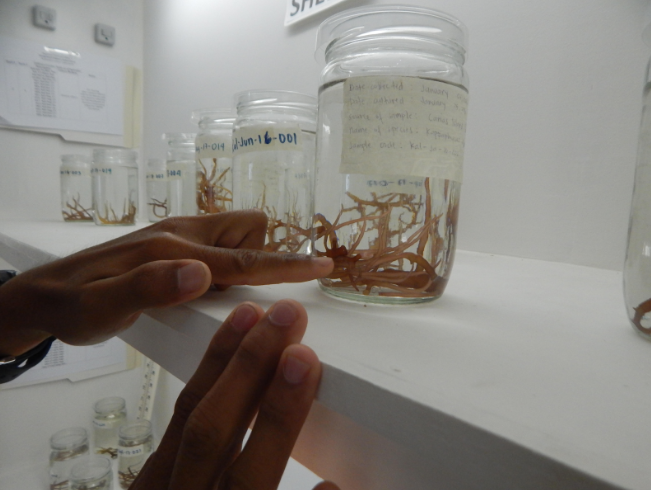
Over the last few decades, it has been discovered that various Philippine seaweeds have important applications in food processing, animal foods, beauty products, and biomedical research. These applications and others are why the southern part of the country is very invested in the mariculture of certain macroalgae species. The southern coast of the Philippines is one of the top producers of farmed seaweed.
What species of macroalgae are cultivated? Why are these species important?
Gracilaria, Kappaphycus, and Eucheuma are the most cultured species in the Philippines due to their demand from other countries. Those three main species are in high demand due to their ability to produce alginate and carrageenan, which have dozens of food and industrial applications. Some other species like Caulerpa, Hydroclathrus, Codium, and Porphyra are also consumed locally.
Where do these species grow in the wild?
These species can be found around the three major Island Regions of the Philippines: Luzon, Visayas, and Mindanao. They are also native to the southeastern islands of Sulu and Tawi-Tawi. They exist in mud flats, mangroves, tidal lagoons, and areas around coral reefs.
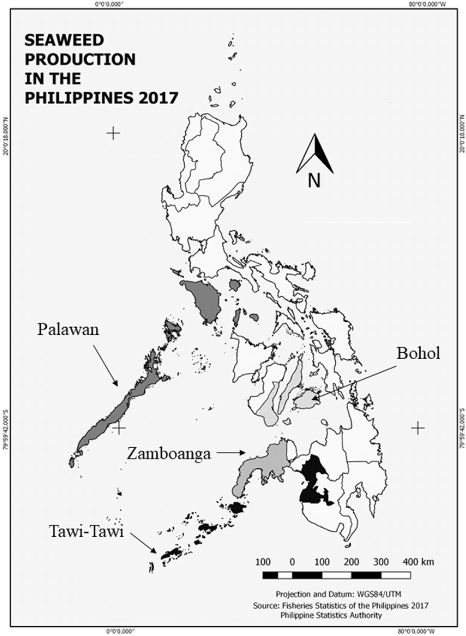
Are these macroalgae species associated with coral reefs?
In the wild, these macroalgae are associated with corals as small patches of vegetation. This is because wild seaweed is subject to grazing by herbivores. Larger patches of seaweed are associated with the shallow waters around reefs. Coral reefs serve also as propagation areas for seaweeds, especially those that reproduce via carpospores. There are areas where the mass culture of seaweeds has affected the growth of corals, even resulting in the death of corals, due to limited light penetration. Large amounts of farmed seaweed deprive coralline algae and coral of sunlight.
Are macroalgae being grown with other species such as fish or urchins?
Yes, macroalgae is polycultured with fishes and shrimp. This only works with select species such as milkfish (Chanos chanos) and Gracilaria. Sometimes shrimps (Litopenaeus vannamei/ Penaeus monodon) can be integrated with Caulerpa. But this requires separate cages so that the seaweed can filter out inorganic compounds produced from the waste of the crustaceans. Sea urchins feed on seaweeds such as Sargassum and Gracilaria. Many other larval/juvenile species can utilize these seaweeds for shelter.
Do people in the Philippines commonly eat seaweeds (such as Caulerpa)?
Filipino people love to eat different species and varieties of Caulerpa (sea grapes). Commonly sea grapes start to emerge in markets from November until June which is either after or before the rainy season. It is predicted that climate change will disrupt this wild production, making it more important that we learn how to culture these species indoors. It is commonly accepted that seaweeds grown indoors are not as nutritious as wild ones.
Kappaphycus and Eucheuma are also served as salads commonly in restaurants but usually, this is local consumption. There are Kappaphycus-like species that are sold in the markets which are combined with vegetable recipes as a natural thickener.
Which organisms eat these seaweeds in the wild?
Organisms that forage on seaweeds include rabbitfish, sea urchins, pufferfish, blennies, and scats. There are reports that siganid populations in some areas of Mindanao have received a population boost due to increased seaweed farming in that region.
How important are seaweed stock banks to commercial seaweed farming?
Stock banks or laboratories play a large role in preserving various seaweed species especially those with market demand like Kappaphycus and Eucheuma. Laboratories preserve seaweed strains to enhance the growth and performance of these seaweeds in the field.
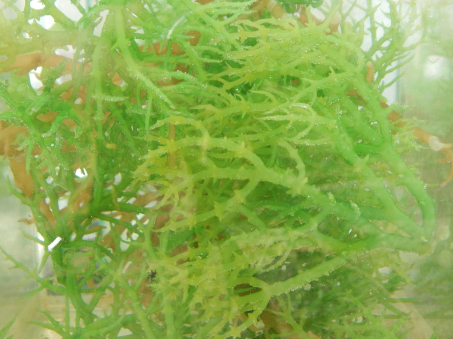
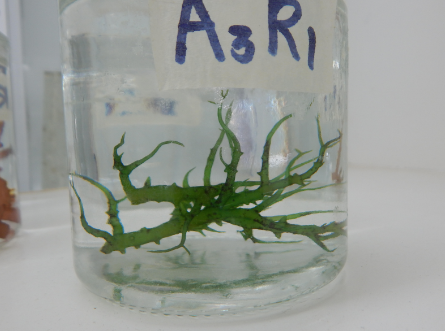
Farmers can receive selected strains of seaweeds while having a place to keep valuable genetics. Relatively recently, micropropagation and callus induction techniques were introduced to increase the production of high-quality seed stocks.
What kind of lights/instruments were used to grow the seaweed stocks indoors?
Indoors, I used 40-watt T12 4100K/6500K fluorescent lamps with a distance of 30 to 40 cm between the jars and the lamp. Jars contain sterilized artificial seawater with fertilizer and propagules of various seaweed strains.
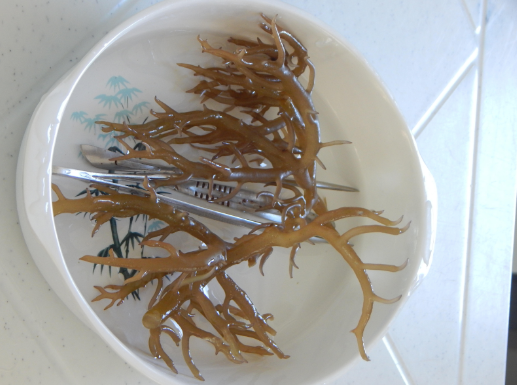
Did you do tissue propagation on the seaweeds? What is the advantage of this technique?
Yeah, tissue culture allowed for enhanced growth. This produces much more usable tissue quicker than branch culture. However, the success rate with this technique is less, and is more easily contaminated.
How important is sterility (quarantine) in the seaweed hatchery?
Having well-isolated seaweed specimens in the hatchery will prevent future diseases or even infectious problems to encounter. Well-preserved sterility of seaweed jars and equipment will also avoid any extra production costs. For example, when there is infection, it could wipe out your seed stocks which requires a lot of effort and time to recover from.
Are there diseases that affect these seaweed species?
Yes, seaweed species especially Kappaphycus and Eucheuma have suffered from ‘ice ice disease’, which is a result of stress from various uncontrollable conditions like high or low salinity, temperature, and/or light intensity. Bacteria involved in these diseases include Vibrio, Aeromonas, and Cytophaga Flavobacterium. These infections make the seaweed turn into a white to yellowish color.
Is the macroalgae species Halymenia commercially aquacultured?
Halymenia durvillae species are currently only harvested from the wild, but I have tried to culture this species in the laboratory. They seem to enjoy higher salinity and ambient light and I think in theory this species could be grown indoors. Currently, this species has not been the focus of farming efforts, but there has been a lot of clinical research done with this species.
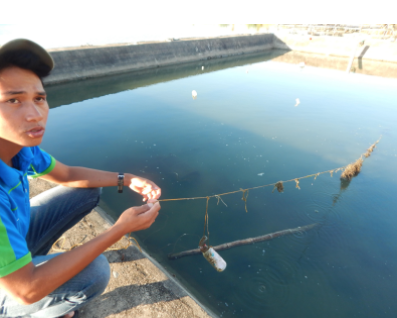
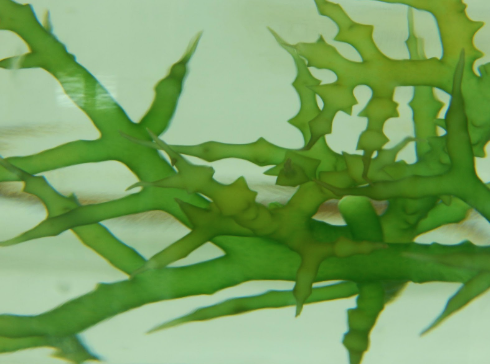
Is seaweed used for wastewater mitigation in the Philippines?
Yeah, seaweeds are also used to filter wastewater. Seaweeds are used to reduce inorganic loads and are combined with crustaceans to avoid algal blooms within rivers. However, there is still important work to determine which species are effective filters, while also being effective aquafeeds.
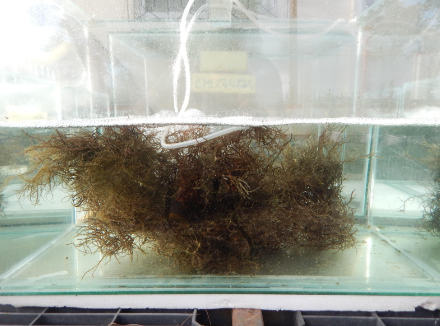
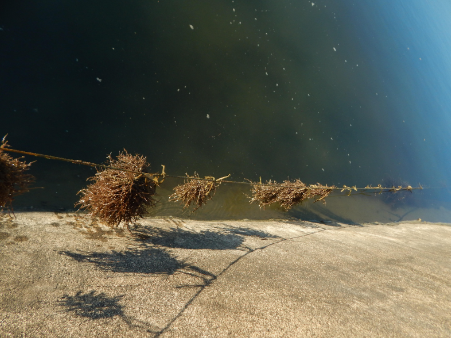
In theory, could these selective propagation techniques be used to produce new colors of macroalgae for display purposes (ornamental aquaculture)?
I never formally documented this, but in my experience, I have seen two colors of seaweed united. Specifically, a red and green Eucheuma could be joined with each other. There were no follow-up tests that I’ve made exploring this because I need to change careers. Hopefully, someday, there will be a scientist that can fuse and produce another color of such seaweed.

Literature Consulted
Mateo, J. P., Campbell, I., Cottier-Cook, E. J., Luhan, M. R. J., Ferriols, V. M. E. N., & Hurtado, A. Q. (2021). Understanding biosecurity: knowledge, attitudes, and practices of seaweed farmers in the Philippines. Journal of Applied Phycology, 33, 997-1010.
About the Author
Taras Victorovich Pleskun is a professional aquaculturist originally from Mystic, Connecticut. Taras studied aquaculture at the University of Rhode Island and the University of Florida. He has an MSc. in Aquaculture and specializes in the cultivation and application of microalgae. Taras has trained in aquaculture operations in the Philippines and Australia, experiences which changed how he appreciated the commercial farming of marine life. Taras is currently employed as Lead Phycologist at TopShelf Aquatics in Winter Park, Florida. His research interests include the application of microbes in reef aquariums, larviculture, and sustainable feeds. Taras loves working and writing for the Reef Aquarium Industry. He truly feels that by learning to breed and appreciate all aquatic critters, humanity will be made smarter, stronger, and kinder.


